Southwest Michigan fruit update – May 16, 2023
Strawberry bloom is underway across the region. Apple bloom is finishing. Most stone fruit is out of the shuck.

Weather
Last week was warmer and drier than the week before. High temperatures started in the low 60s but climbed to around 80 degrees Fahrenheit by Thursday, May 11. Most days saw low temperatures in the upper 40s or 50s. An unsettled air mass brought light, scattered precipitation to the area on Saturday, May 13. Rain amounts were less than a tenth of an inch for much of the region, but the slow drying conditions created disease infection events for some locations.
We collected an above average number of growing degree days (GDD) last week, 140 GDD base 42 and 88 GDD base 50, respectively. We are very close to the long-term average.
|
Southwest Michigan GDD summary from March 1 – May 15, 2023 |
|||
|---|---|---|---|
|
Station |
GDD 42 F |
GDD 45 F |
GDD 50 F |
|
Benton Harbor (SWMREC) |
558 |
448 |
307 |
|
Lawton (Lawton) |
547 |
438 |
298 |
|
Fennville (TNRC) |
474 |
374 |
249 |
|
Average for the SW region |
536 |
428 |
291 |
|
Average last week |
396 |
309 |
203 |
The next week will be a little cooler. Expect sunny days and high temperatures in the 60s for most days. A day or two in the low 70s are possible. Low temperatures should stay in the upper 40s or warmer. The only chance of rain for the week is expected on Friday evening, May 19, and Saturday.
Tree fruit
Most of the tree fruit are in petal fall or beyond. Oriental fruit moth catch is continuing. Egglaying and hatch is expected now. Tarnished plant bug and plum curculio are expected to be very active when evening temperatures start to climb. The Trevor Nichols Research Center trap line in Fennville, Michigan, is catching San Jose scale male adults on sticky traps.
Apricot crop prospects are fair to good. Plum curculio is a threat now.
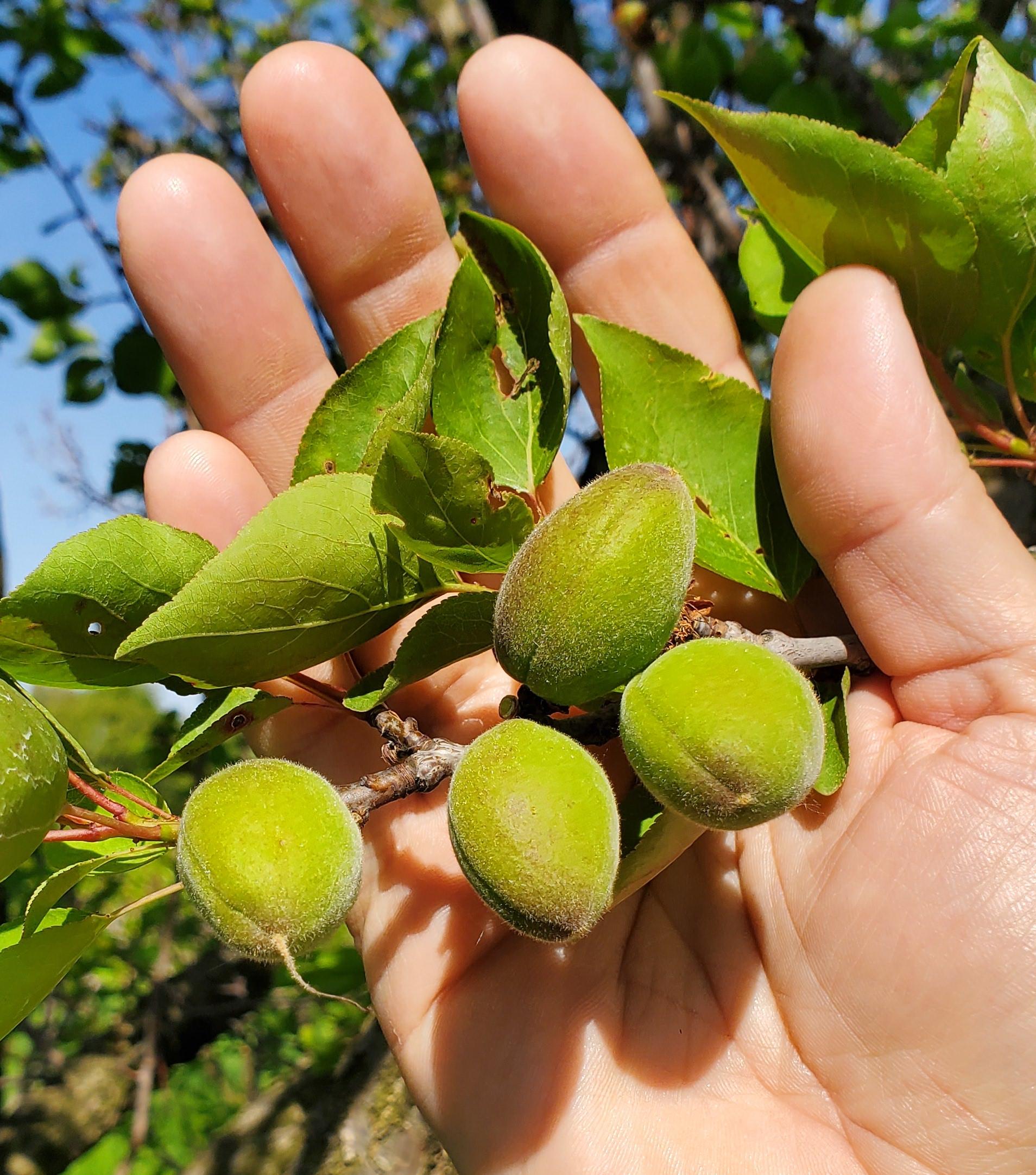
Peach and nectarine are out of the shuck in central Berrien County. Crop potential reports so far are generally good although significant damage from frost has been reported in some sites. Plum curculio, tarnished plant bug and oriental fruit moth are the targets for post shuck split sprays.
We are seeing a few leaves with bacterial spot symptoms of watersoaked areas. The need for bacterial spot management generally becomes more important after bloom to protect leaves from becoming a source of infection for fruit after shuck split. Oxytetracycline is used for bacterial spot treatment when fruit emerge from the shuck to reduce potential phytotoxic effects of copper.
In orchards that had peach scab problems last year, the first covers for peach scab should be applied at petal fall, and coverage should be maintained through third cover. Rusty spot (powdery mildew) coverage is needed from shuck split to pit hardening for susceptible varieties.
Cherries are out of the shuck for tart and sweet cherries in Berrien County. Cherry leaf spot is the primary disease concern now. Some orchards have powdery mildew pressure, but this is primarily a problem in northwest Michigan. Plum curculio is the primary insect concern.
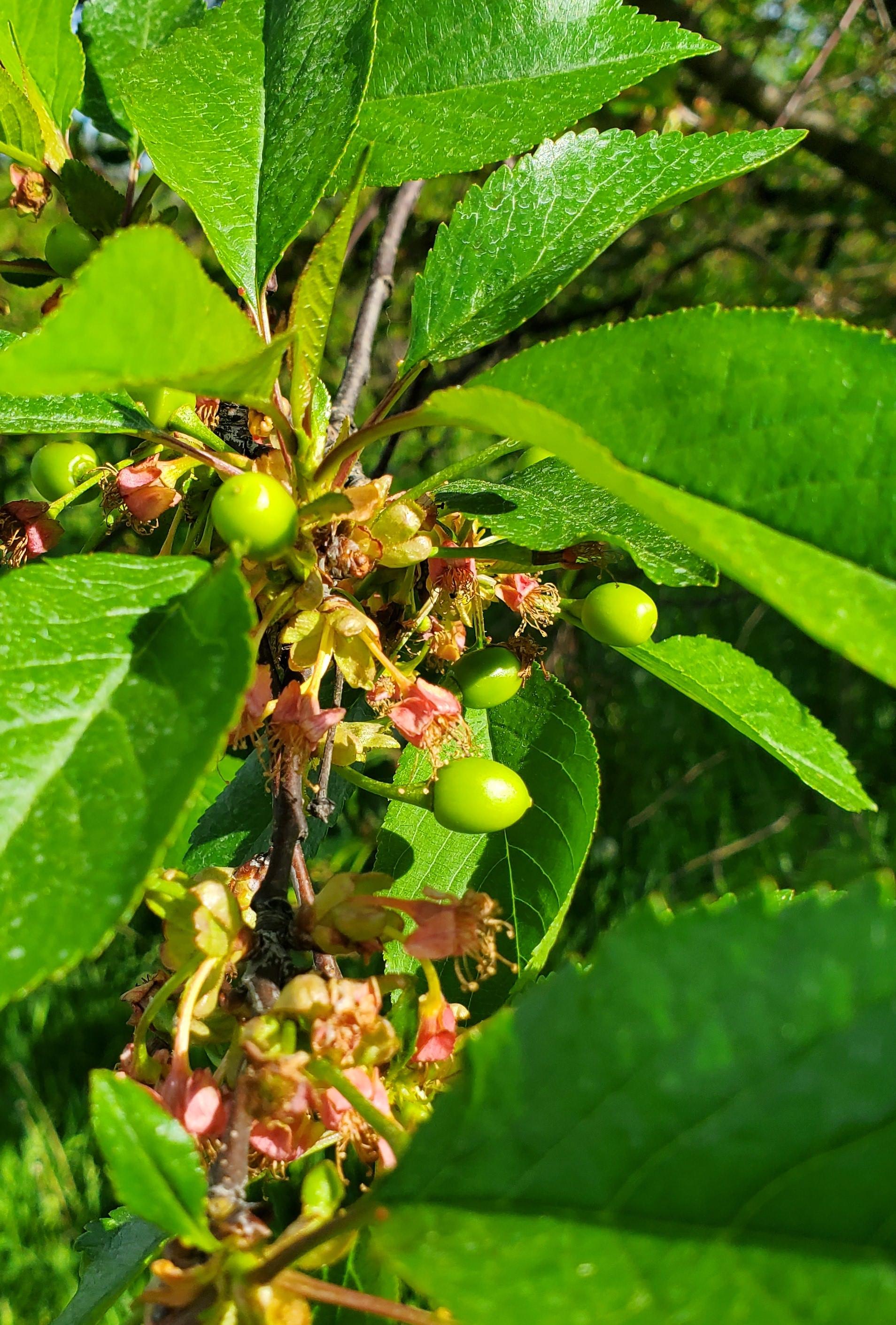
In plum, fruit out of the shuck and visibly swelling in central Berrien County. Disease coverage concerns are both black knot and brown rot. Like other stone fruit, managing plum curculio starts at petal fall.
Apples range from 7 to 12 mm fruit diameter, depending on the variety and location. The Cornell apple carbohydrate model is available in the apple section on Michigan State University Enviroweather to help timing thinning sprays. Mild temperature forecasted for the week will make thinning sprays less effective. Scab symptoms have not been reported but could be showing. Disease management concerns now are scab, powdery mildew, rust and fire blight.
A fire blight infection period was predicted for Saturday, May 13, for much of the southwest region. Symptoms take a week or more to show up, depending on the temperature. Low rates of Apogee and Actigard help to reduce the risk of shoot blight.
Tiny fruit tree leaf roller larvae are webbing and feeding on leaves. Apple flea weevils are actively making holes in leaves and blossoms in organic and abandoned apple trees.
Pear (Bartlett) fruit are ranging from 10 to 12 mm diameter in the south end of the region. Scab and pear psylla management are the major concerns.
Small fruit
Grape shoot lengthening continues on Concord juice grapes and early hybrids like Marquette. Advanced areas have shoot lengths of 8-12 inches. Other hybrids have shoot lengths of 4-8 inches. Vinifera varieties are at first leaf to 4-inch shoots, depending on variety.
With the warmer temperatures last week, the freeze damage from late April has become more noticeable. Secondary buds are at bud burst in these locations. Wine grape prospects still look good. Juice grapes with good air drainage also appear in good shape.
The disease focus is on phomopsis, black rot, anthracnose and powdery mildew. With the mild winter, expect high levels of surviving inoculum on shoots, dried clusters and canes. Generally wet conditions are necessary for disease development. Powdery mildew is the exception. It prefers humid conditions with no rain and average temperatures in the 60s and 70s. This weekend may be conducive to disease development.
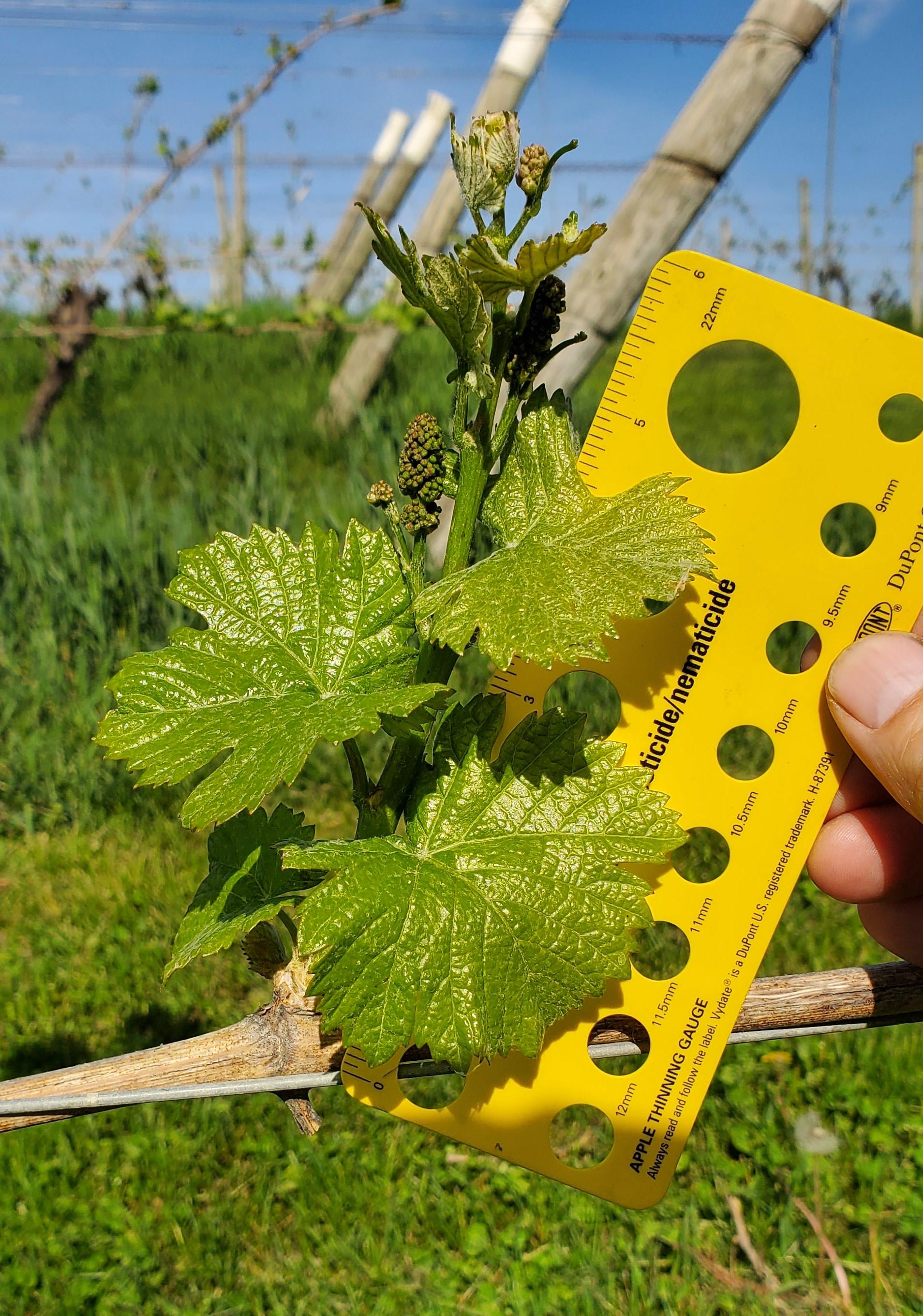
Blueberry bloom is here! The window for application of copper, Sulforix or lime sulfur products to suppress early season diseases is closing. As leaves expand, mummy berry and phomopsis shoot strikes are the main disease focus. We found several mummy berry shoot strikes while scouting in the Bangor, Michigan, area.
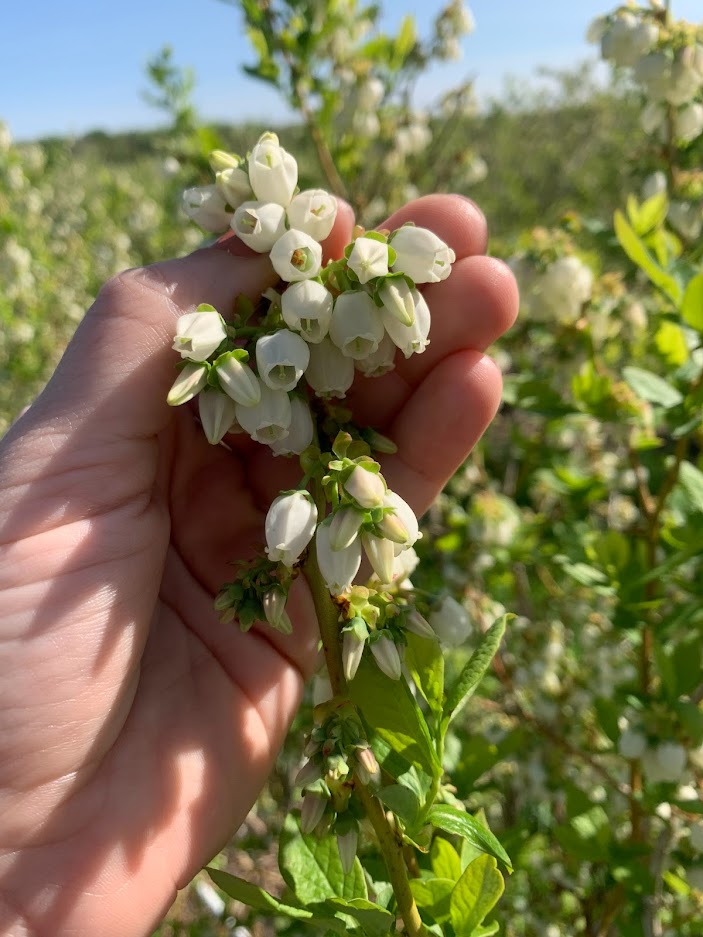
Strawberries have greened up and new leaves continue to emerge from the crown, blooms are out. Growers are starting to think about fruit rot sprays. If you are still hoping to spray for weeds, make sure and check the pre-harvest interval (PHI) when selecting an herbicide. We are getting to the part of spring where some herbicide PHIs are cutting it close to predicted harvest dates.
Bramble shoots are lengthening. Flower buds are visible and developing.
Currant and gooseberry bloom is complete. Fruit are beginning to size up.
Paw paw trees are blooming. Bloom count looks very good.
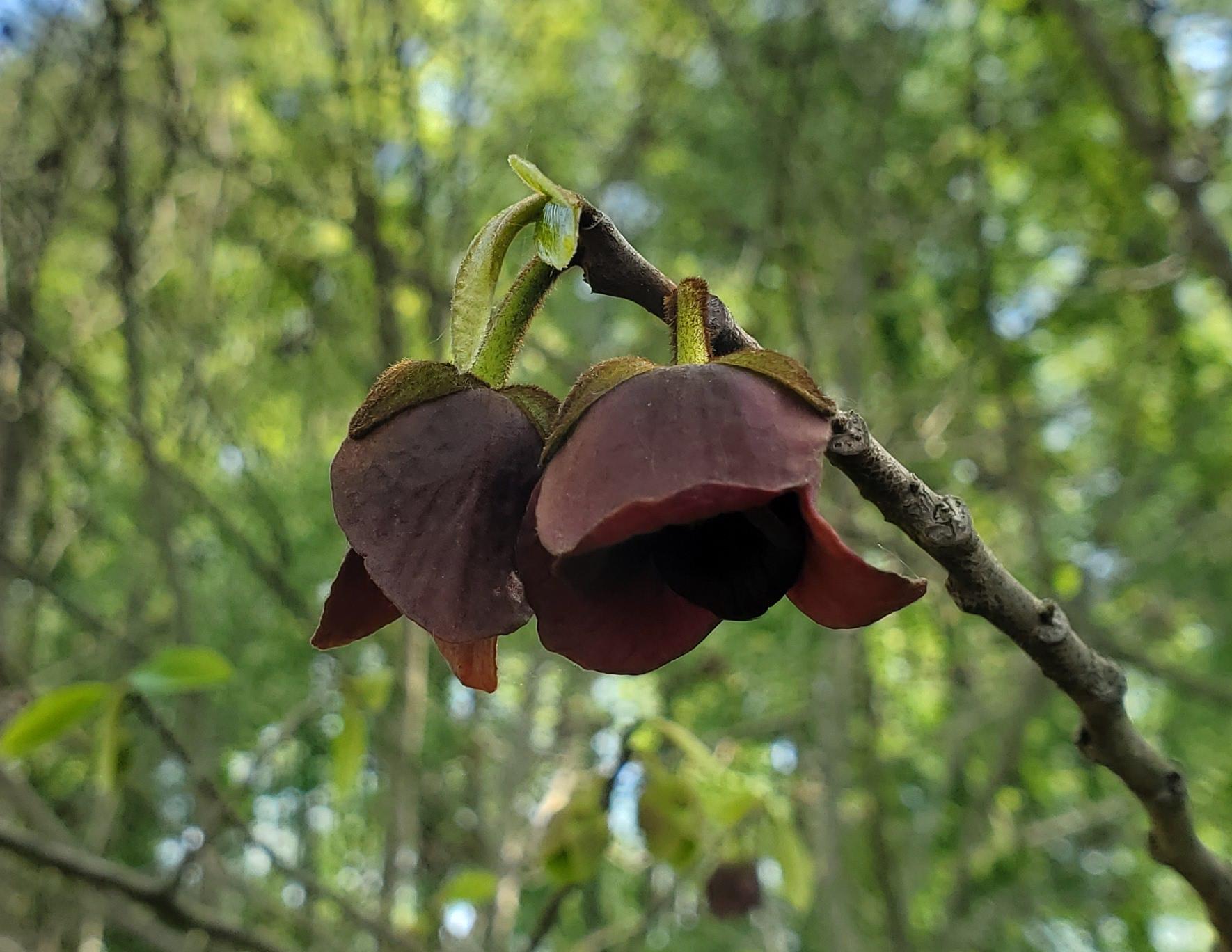
Announcements
There will be a blueberry pollination workshop on Wednesday, May 17, in Grand Junction, Michigan. Sign up here. There will be an identical workshop in West Olive, Michigan, on June 1. A signup link for this workshop will be available soon.
The Southwest Michigan Grape IPM meeting will be May 22 from 1 – 4 p.m. at the Southwest Michigan Research and Extension Center near Benton Harbor, Michigan. We will have a host of Michigan State University Extension talent come discuss all things IPM (integrated pest management). The meeting is free and no registration is required. You can get three RUP credits as well.
Our regular southwest Monday fruit IPM updates are once again a hybrid format. The meetings are held in-person with virtual attending also available online. Our first meeting was Monday, April 10, at 5:30 p.m. and will continue through the rest of the season. You need to register to receive the Zoom link and password for these meetings. The webinars are free and one pesticide applicator credit is available for each meeting. The same Zoom link will be used with all the Monday meetings—you only need to register once.
This work is supported by the Crop Protection and Pest Management Program [grant no 2021-70006-35450] from the USDA National Institute of Food and Agriculture. Any opinions, findings, conclusions, or recommendations expressed in this publication are those of the author(s) and do not necessarily reflect the view of the U.S. Department of Agriculture.



 Print
Print Email
Email


